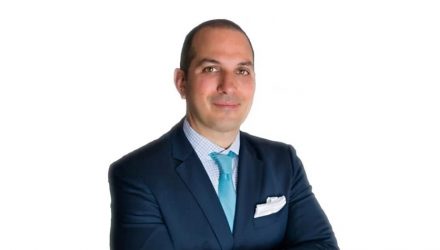VettaFi recently began a weekly series called “This Week in ETFs.” My colleague Heather Bell recaps ETF filings, closures, and launches. There’s a lot going on.
The Astoria US Quality Kings ETF (ROE) was one of the funds that launched in the start of August. It had a cool ticker for a quality ETF, and minimal assets. But less than two weeks later, it crossed the key $50 million asset milestone. For many advisors and investors, an ETF has questionable viability until it passes that point. VettaFi spoke to John Davi, CEO and CIO of Astoria Advisors, to learn more.
Astoria Advisors offers ETF managed portfolios and serves as an outsourced CIO for many in the financial services industry. Davi was also a speaker at the Exchange conference in 2023. He joined me and a few other industry experts to provide ETF education and best practices. (Registration for Exchange 2024 is open.) Read our conversation below.
VettaFi: Why is now a good time to focus on the quality factor, and how does Astoria Portfolio Advisors screen for high-quality companies?
John Davi: We believe that quality should be the ballast of one’s portfolio. Historically, it has a high sharpe ratio amongst the well known factors. While growth and momentum may have better CAGRs, they historically suffer relatively higher drawdowns. 2022 was an excellent example of how extreme growth’s drawdown can be.
Similarly, 2023’s upswing for growth stocks has also caught everyone by surprise, and few were positioned for it. Quality historically has had a smoother risk-adjusted return compared to the well-known factors. Hence, in our view, we believe quality should be the ballast of your portfolio. Think of quality as king, like in the game of chess. If you lose your king in chess, the game is over. Our preference is to own quality stocks, which historically have had a smoother return experience for investors.
Astoria screens for quality by looking at a company’s return on equity (ROE) and return on assets (ROA). Hence the ticker: ROE.
VettaFi: While the ETF is relatively new, can you share how this approach has been used by you and the team in the past?
John Davi: I started my career in quantitative derivatives research and built portfolios on behalf of institutional clients of Merrill Lynch. Since Astoria’s founding in 2017, we have been constructing quality portfolios using the same methodology we apply to ROE. We would note that our SMA high quality and other U.S. stock portfolios also apply an equal-weighted approach.
VettaFi: One of the unique traits of your ETF is the equal-weighted approach. Why is this an important distinction?
John Davi: The S&P 500 currently has the highest concentration of stock-specific and sector risk in 30-40 years. Technology stocks (Apple, Microsoft, Nvidia) make up over 26% of the S&P 500, while consumer discretionary and communication services combined (Amazon, Alphabet, Tesla, Meta) make up an additional 19%.
Most of the smart beta ETFs that are out there are optimized against the S&P 500, so they tend to carry similar concentration risk. We liken this period to the late 1990s when the internet bubble constituted a large percentage of stocks in the S&P 500. After this bubble burst, factor investing became prominent, with large-scale firms entering the space.
VettaFi: What are some examples of ROE’s holdings? Can you touch on a few in different sectors?
John Davi: We own a lot of the stocks in the S&P 500, such as Netflix, United Healthcare, Apple, Nvidia, Microsoft, Amgen, and Home Depot. We equal-weight them, so they are generally 1% of our ETF instead of their market-cap-weighted exposure in the S&P 500.
It’s important to note that we are optimizing ROE’s sector exposures to the US large-cap universe. In other words, we aren’t making any sector bets. Hence, the term sector optimization. So if Technology is 28% of the US large-cap universe, we will have 28% as well.
However, rather than three stocks making up more than 16% of the 28% tech sector weight, ROE will include 28 different high-quality technology companies, each weighted at 1%.
For more news, information, and analysis, visit VettaFi | ETF Trends.
